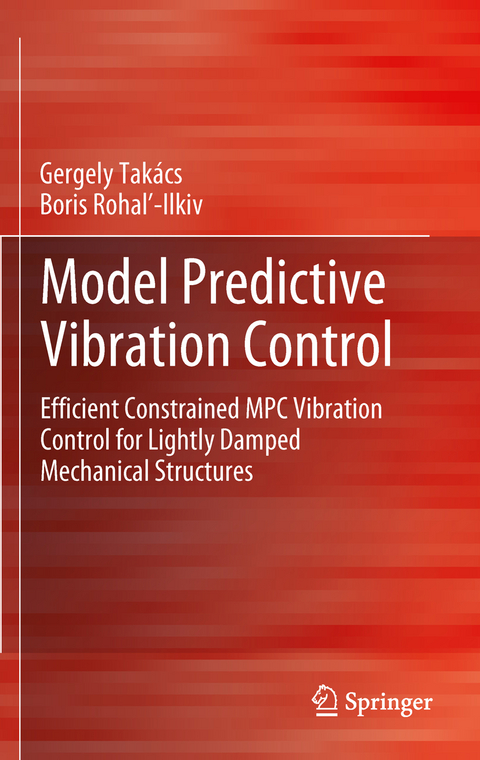
Model Predictive Vibration Control
Springer London Ltd (Verlag)
978-1-4471-6072-4 (ISBN)
Real-time model predictive controller (MPC) implementation in active vibration control (AVC) is often rendered difficult by fast sampling speeds and extensive actuator-deformation asymmetry. If the control of lightly damped mechanical structures is assumed, the region of attraction containing the set of allowable initial conditions requires a large prediction horizon, making the already computationally demanding on-line process even more complex. Model Predictive Vibration Control provides insight into the predictive control of lightly damped vibrating structures by exploring computationally efficient algorithms which are capable of low frequency vibration control with guaranteed stability and constraint feasibility.
In addition to a theoretical primer on active vibration damping and model predictive control, Model Predictive Vibration Control provides a guide through the necessary steps in understanding the founding ideas of predictive control applied in AVC such as:
· the implementation of computationally efficient algorithms
· control strategies in simulation and experiment and
· typical hardware requirements for piezoceramics actuated smart structures.
The use of a simple laboratory model and inclusion of over 170 illustrations provides readers with clear and methodical explanations, making Model Predictive Vibration Control the ideal support material for graduates, researchers and industrial practitioners with an interest in efficient predictive control to be utilized in active vibration attenuation.
Gergely Takács is currently a junior research engineer at the Institute of Automation, Measurement and Applied Informatics of the Faculty of Mechanical Engineering of the Slovak University of Technology in Bratislava, where he received his PhD in mechatronics in 2009. His recent doctoral studies and academic career have been fully devoted to the application of computationally efficient model predictive controllers in the active vibration control of lightly damped structures. He has spent time as a visiting researcher in the Control Group of the Department of Engineering Science at the University of Oxford, where he has been studying efficient predictive control algorithms. His research interests include active vibration control, model predictive control and smart materials. Professor Boris Rohaľ-Ilkiv received his academic degrees from the Slovak University of Technology in Bratislava, the Faculty of Mechanical Engineering, where he currently works as a tenured professor. He has devoted the majority of his academic career to model predictive control, with special attention given to practical real-time controller implementation issues.
1. Introduction.- 2. Basics of Vibration Dynamics.- 3. Smart Materials in Active Vibration Control.- 4. Algorithms in Active Vibration Control.- 5. Laboratory Demonstration Hardware for AVC.- 6. Basic MPC Formulation.- 7. Stability and Feasibility of MPC.- 8. Efficient MPC Algorithms.- 9. Applications of Model Predictive Vibration Control.- 10. MPC Implementation for Vibration Control.- 11. Simulation Study of Model Predictive Vibration Control.- 12. Experimental Model Predictive Vibration Control.- A. FE Modeling of the Active Structure.- B. MPC Code Implementation Details.
| Zusatzinfo | XXXVIII, 518 p. |
|---|---|
| Verlagsort | England |
| Sprache | englisch |
| Maße | 155 x 235 mm |
| Themenwelt | Informatik ► Theorie / Studium ► Künstliche Intelligenz / Robotik |
| Mathematik / Informatik ► Mathematik ► Analysis | |
| Mathematik / Informatik ► Mathematik ► Angewandte Mathematik | |
| Technik ► Elektrotechnik / Energietechnik | |
| Technik ► Maschinenbau | |
| Schlagworte | Active Vibration Damping • Computational Efficiency • linear systems • Model Predictive Control • Vibration Control |
| ISBN-10 | 1-4471-6072-X / 144716072X |
| ISBN-13 | 978-1-4471-6072-4 / 9781447160724 |
| Zustand | Neuware |
| Haben Sie eine Frage zum Produkt? |
aus dem Bereich


